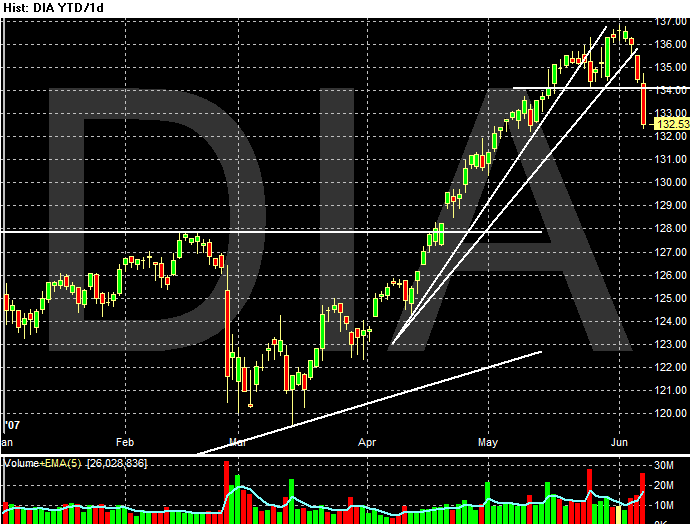
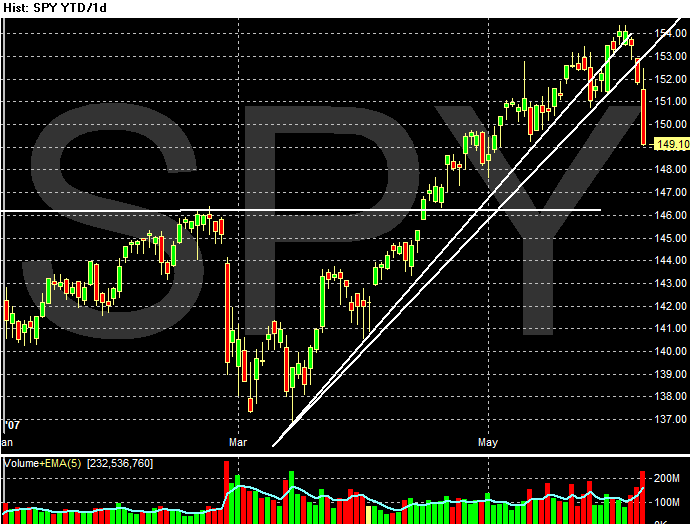
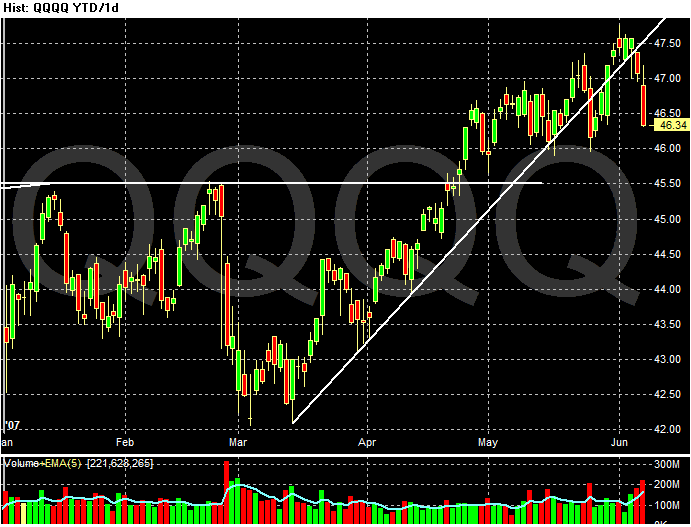
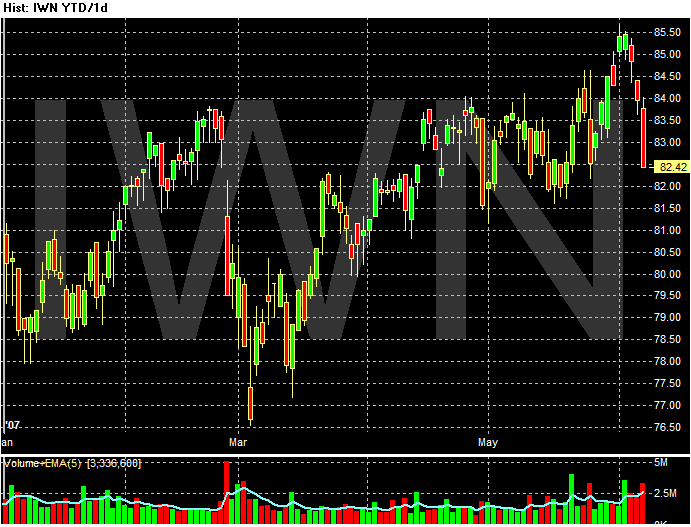
Also notice the utilities and transports are declining. Utilities are declining on heavy volume.
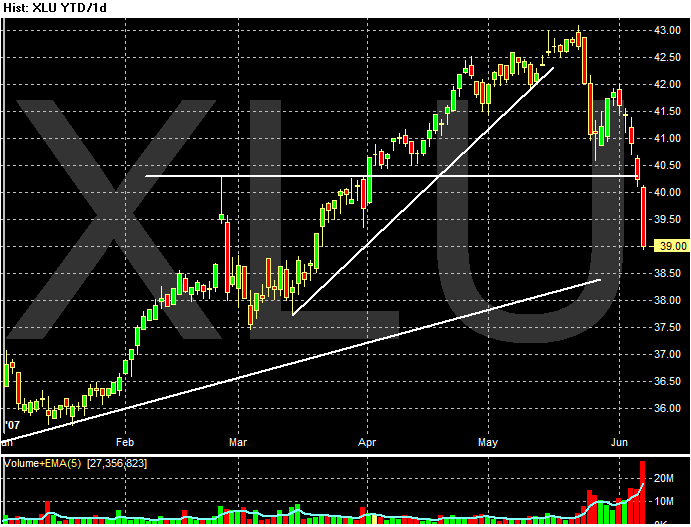
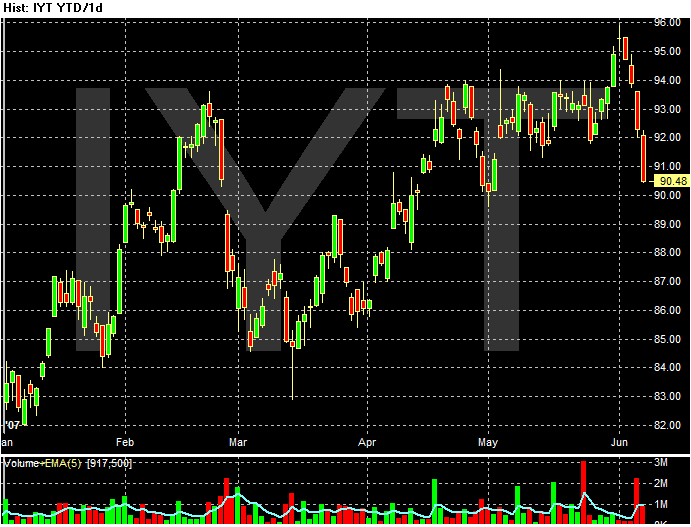
Finally, notice that financials broke support on heavy volume. This is the largest segment of the S&P 500.
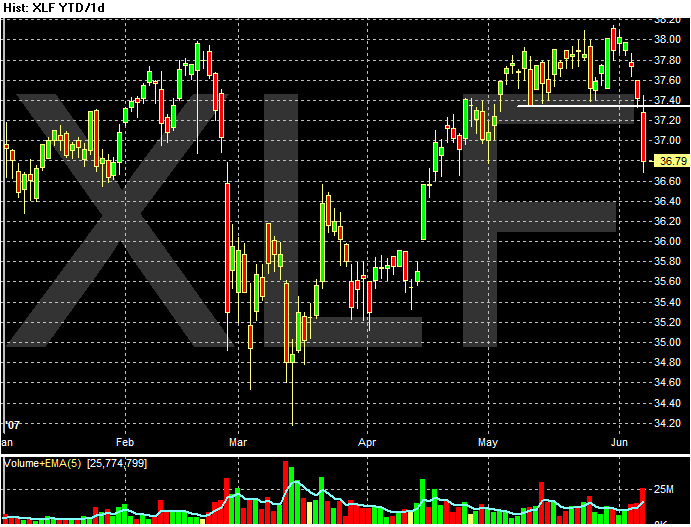
The retail sales numbers obviously spooked traders yesterday, as both the consumer staples and discretionary ETFs dropped, also below their trendlines.


There are some stories that yesterday's retail sales figures were a reason for the sell-off. Retail sales were up 2.5% in May. While this is below expectations, it's a fairly good number. However, there are questions about whether the slowdown will continue:
The latest monthly results came on the heels of an April showing that was among the worst on record on a comparable basis. Though surging gasoline prices helped to dull consumers' appetite for shopping during the month, much of the April weakness stemmed from bad weather -- which hurt demand for spring fashions -- and an early Easter.
Now, the bigger worry is that the slumping housing market will damp shoppers' spending through the summer and beyond.
The industry's same-store sales, or sales at stores open at least a year, increased 2.5% last month, according to an index of 50 major chains compiled by the International Council of Shopping Centers. That is an improvement from April's 1.9% decline, but it falls well short of the 4.5% gain retailers recorded in May 2006, said Michael Niemira, chief economist at the New York-based trade group.
"Year to date, we've seen a modest pace of spending relative to last year, the year before that, or the year before that," Mr. Niemira said. "We have a consumer slowdown -- it's real, it's continuing and largely driven by the slowdown in housing."
While retail spending may be slowing, overall personal consumption expenditures are increasing at near the same pave they have been for the last four quarters.
While the reason given for this sell-off is the 10-year rising above 5%, I think this is simply traders taking profits. While inflation concerns are increasing, we're far from a dose of high inflation. And as I have said before, 5% isn't that high. Yields were higher during the later part of the 1990s and the economy did fine.
Short version: So far, I think this is a profit taking sell-off. However, there is always the possibility that analysis will change as more data becomes available.